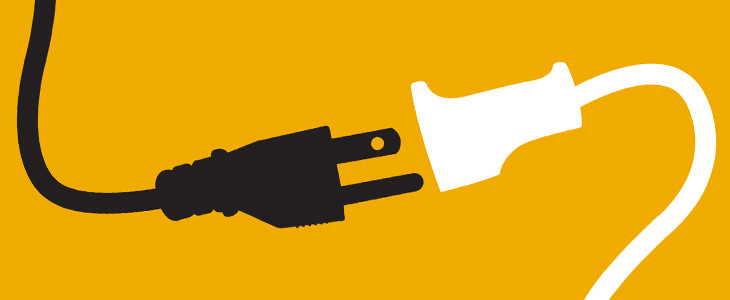
There was a time when cars were assessed largely by their horsepower or miles-per-gallon. These were the yardsticks of comparison in the analog age. But now, the question asked of car owners is more likely to become, “What OS version do you have?”
Increasingly, our vehicles are becoming traveling data centers, with Wi-Fi hotspots, operator-assisted navigation, sophisticated diagnostic computers, smartphone-based control apps and real-time tools like parking assist and lane change warnings. They are no longer dumb machines, nor are these innovations exclusive to the most expensive prestige automobiles.
In fact, such talents are not exclusive to cars at all, since refrigerators, washing machines, thermostats, and devices of all kinds have joined this intelligent party. Even the most intangible of objects, insurance, has started to move into this sphere.
These items play a role in the new era known collectively as the Internet of Things (IoT), in which devices large and small communicate with owners, operators, manufacturers and suppliers to pro-actively maintain their operational health, and more importantly, to create a direct channel for up-selling and ongoing revenue opportunities. No company is excluded from this transformation.
As General Electric CEO Jeff Immelt said at a 2014 Minds+Machines summit, “If you went to bed last night as an industrial company, you’re going to wake up this morning as a software and analytics company.”
IoT-based products are different from their analog predecessors. A permanent, high-speed Internet-based relationship guarantees that vendor and manufacturer need never be detached from the products they sold, or from the customers they sold them to. IoT has spawned new partner ecosystems, and these, in turn, demand new business models.
- The Cactus, a compact car from European automaker Citroën, comes with a variation on the traditional lease, one based on “pay-per-use.” Citroën acknowledges “there is a portion of the population that is not willing to buy a car, but is willing to buy the use of a car.” This manufacturer joins the ranks of car-as-a-service operations like ZipCar, but ups the ante – and improves the convenience factor – by allowing a customer to keep the vehicle permanently in the driveway as their own car (for a small base rate), and then pay the balance according to when and how it is used.
- Inside the home, IoT washing machines can now schedule service calls and part replacements directly, but more importantly can offer the owner a subscription for detergent delivery, with a three-month free trial, as well as other up-sells and cross-sells.
- New insurance companies are rolling out health plans whose premiums decrease with the amount of exercise performed by the member, as reported by a wearable fitness tracker.
- Cars and trucks of all types are now busy sending their diagnostic data back to the dealership, to ensure prompt servicing as well as increased up-selling potential between dealer and owner.
These physical examples of IoT represent more than an innovation in product design. They also demand a change in the perception of the consumer. Whether in the B2B or B2C markets, there is now just an audience of one. This forces a shift from a mass production mindset to one of “mass personalization,” using the power of data to understand and serve each customer on their own terms.
Pricing, too, must change. Where once there was one pricing model, other options exist, for even the largest of big-ticket items. These can include:
- “buy-once” products bundled with a subscription
- free trial/freemiums, leading to recurring payments or subscriptions
- pay-per-use pricing; and
- entitlements (such as 2 free appointments with a personal trainer when purchasing exercise equipment)
The IoT revenue model ushers in an updated and more reliable style of loss-leader pricing, starting with a negative BOM (bill of materials), but then subsidizing the cost of the hardware with the revenues from bundled services. Loss-leader pricing in itself is not new; razor blade manufacturers, among others, have been using a negative BOM model for years. But now the analytics have become more accurate, and the customer relationship more individualized, consequently tipping the concept from a traditional loss leader to a more reliable positive cash flow formula.
Bringing these thoughts back to the notion of cars being assessed by their OS version, it is important to bear in mind that an operating system is, by its very nature, upgradeable, and reinforces the link between manufacturer and purchaser. In a way, the purchase is never complete, since upgrades bring along with them new features and additional support and purchase opportunities.
That is where the Internet of Things truly shines. It is a permanent pathway linking seller and buyer—a dynamic relationship of mutual benefit that grows and improves over time.


 IoT technologies are beginning to drive new competitive advantage by helping consumers manage their lives (Amazon Echo), save money (Ôasys water usage monitoring), and secure their homes (August Smart Lock). The IoT also has the potential to save lives. In healthcare, this means streaming data from patient monitoring devices to keep caregivers informed of critical indicators or preventing equipment failures in the ER. In manufacturing, the IoT helps drive down the cost of production through real-time alerts on the shop floor that indicate machine issues and automatically correct problems. That means lower costs for consumers.
IoT technologies are beginning to drive new competitive advantage by helping consumers manage their lives (Amazon Echo), save money (Ôasys water usage monitoring), and secure their homes (August Smart Lock). The IoT also has the potential to save lives. In healthcare, this means streaming data from patient monitoring devices to keep caregivers informed of critical indicators or preventing equipment failures in the ER. In manufacturing, the IoT helps drive down the cost of production through real-time alerts on the shop floor that indicate machine issues and automatically correct problems. That means lower costs for consumers.
 Where are the most exciting and viable opportunities right now for companies looking into IoT strategies to drive their business?
Where are the most exciting and viable opportunities right now for companies looking into IoT strategies to drive their business? Kavis: We have a lot less control over what is coming into companies from all these devices, which is creating many more openings for hackers to get inside an organization. There will be specialized security platforms and services to address this, and hardware companies are putting security on sensors in the field. The IoT offers great opportunities for security experts wanting to specialize in this area.
Kavis: We have a lot less control over what is coming into companies from all these devices, which is creating many more openings for hackers to get inside an organization. There will be specialized security platforms and services to address this, and hardware companies are putting security on sensors in the field. The IoT offers great opportunities for security experts wanting to specialize in this area.
 Real-time analysis, together with emerging digital technologies and intelligent digital processes, have upended the workplace as we know it; and businesses are today subject to a deep cultural shift in work organisation, culture and management mind set. The impact is a shift towards workers looking at available information as opposed to ‘explorative surgery’ measures when the damage is already done.
Real-time analysis, together with emerging digital technologies and intelligent digital processes, have upended the workplace as we know it; and businesses are today subject to a deep cultural shift in work organisation, culture and management mind set. The impact is a shift towards workers looking at available information as opposed to ‘explorative surgery’ measures when the damage is already done.



